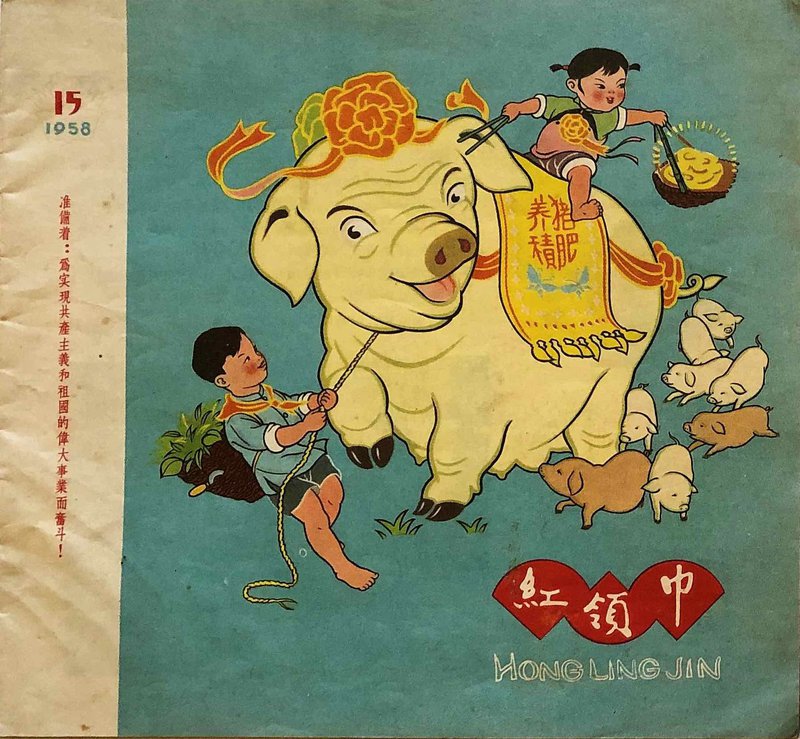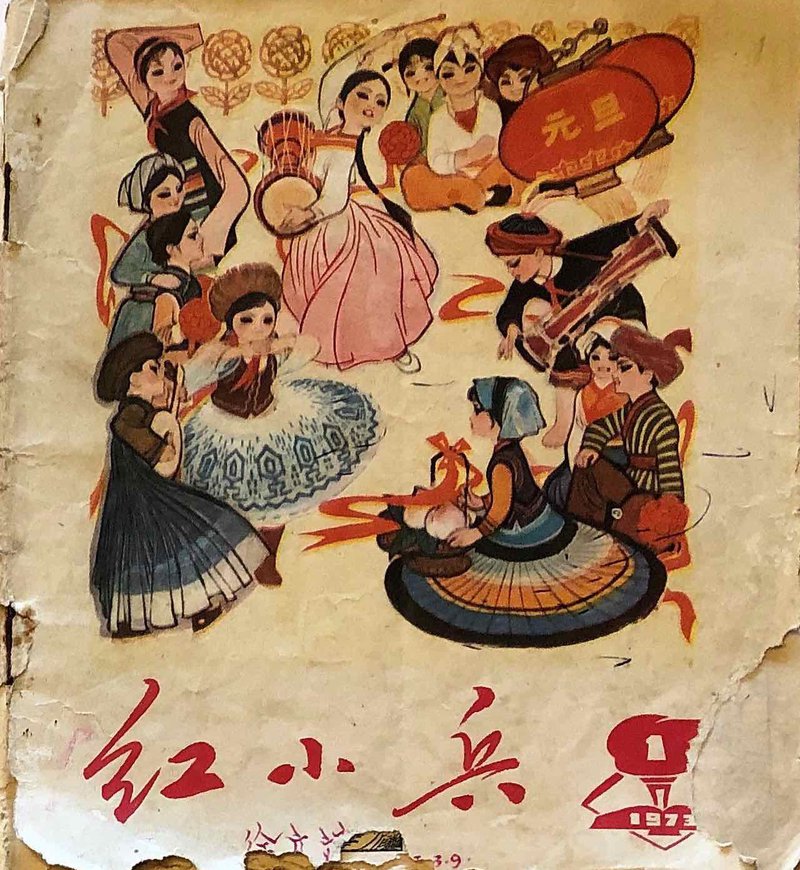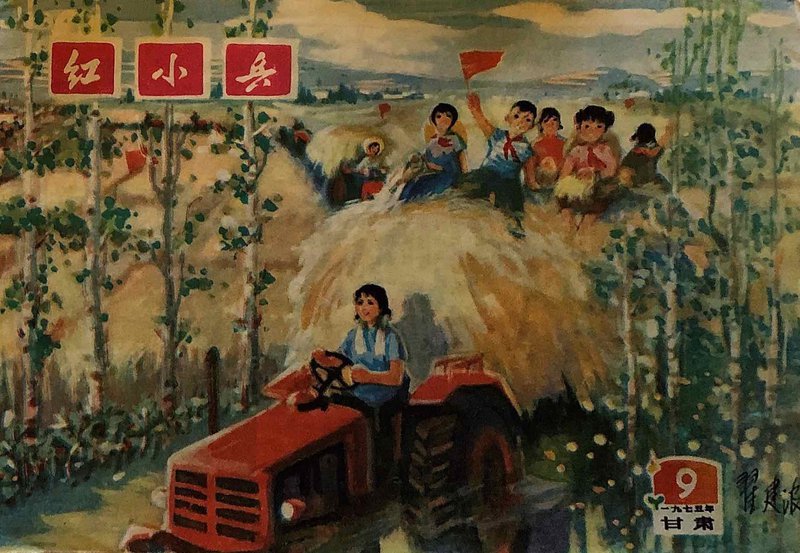⧉Image Children's Magazines: From Young Pioneers To Little Red Guards

- Title
- Image 1 Red Scarf (Hong lingjin 红领巾) Magazine Cover
- Date
- 1959-08
- Creator
- Unknown
- Publisher
- Honglingjin she
- Rights
- Personal Collection. Fair use.
- Description
This picture of a huge pig, several times the size of the children, is a good example of revolutionary romanticism, a style of propaganda during the Great Leap Forward. The pig and the young girl wear celebratory rosettes. The boy’s red scarf is the instantly recognisable symbol of the Young Pioneers. Red Scarf was published centrally and distributed all over the country.

- Title
- Image 2 Little Red Guard (hong xiaobing 红小兵) Magazine Cover
- Date
- 1973-01
- Creator
- Unknown
- Publisher
- Guangdong People’s Little Red Guard Publishing House (Guangdong renmin hongxioabing chubanshe 广东人民红小兵出版社)
- Rights
- Personal Collection. Fair use.
- Description
This is a multi-national group of children celebrating the New Year holiday (1st January, not the Spring Festival). During the Cultural Revolution (1966-76), the Little Red Guards replaced the Young Pioneers, and the magazine Little Red Guard replaced Red Scarf. Unlike Red Scarf, Little Red Guard was published in many different places, so the style and content of the various editions were different from each other. This issue was published in Guangdong, southeast China. The first years of the Cultural Revolution were violent and chaotic, and all schools and universities were closed. By 1973, schools were open again, and children’s lives were becoming more normal.

- Title
- Image 3 Little red guard (hong xiaobing 红小兵) Magazine Cover
- Date
- 1975
- Creator
- Unknown
- Publisher
- Gansu People’s Publishing House (Gansu renmin chubanshe 甘肃人民出版社)
- Rights
- Personal Collection. Fair use.
- Description
This issue of Little Red Guard is from Gansu, northwest China. It has a different format and different content from the one published in Guangdong. In the later years of the end of the Cultural Revolution, when schools re-opened, education was structured to include practical learning—part academics and part work. The children here have been helping with the harvest, sitting on piles of hay, driving home from the fields. As usual in Chinese propaganda imagery, the tractor driver is a woman.